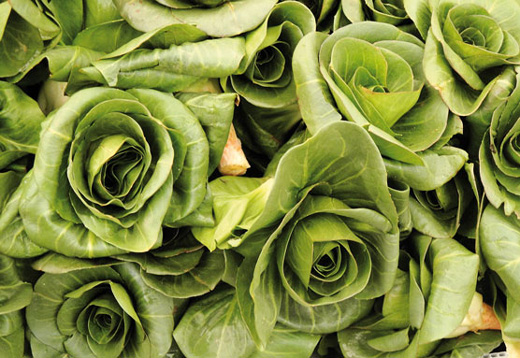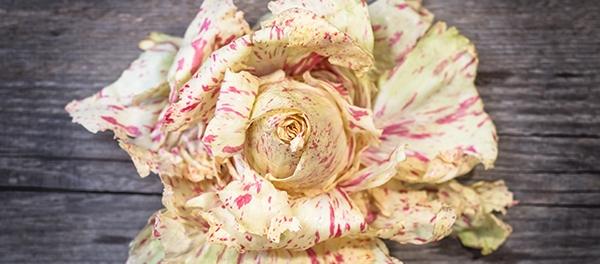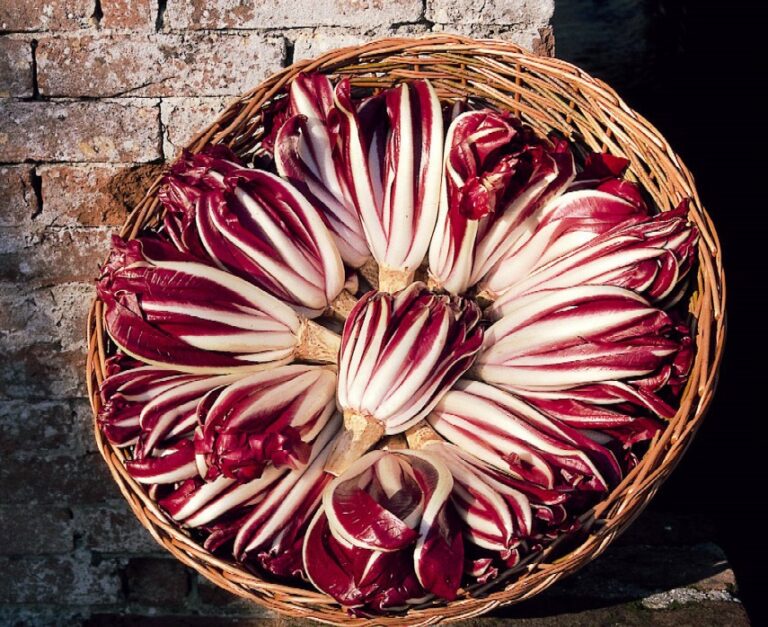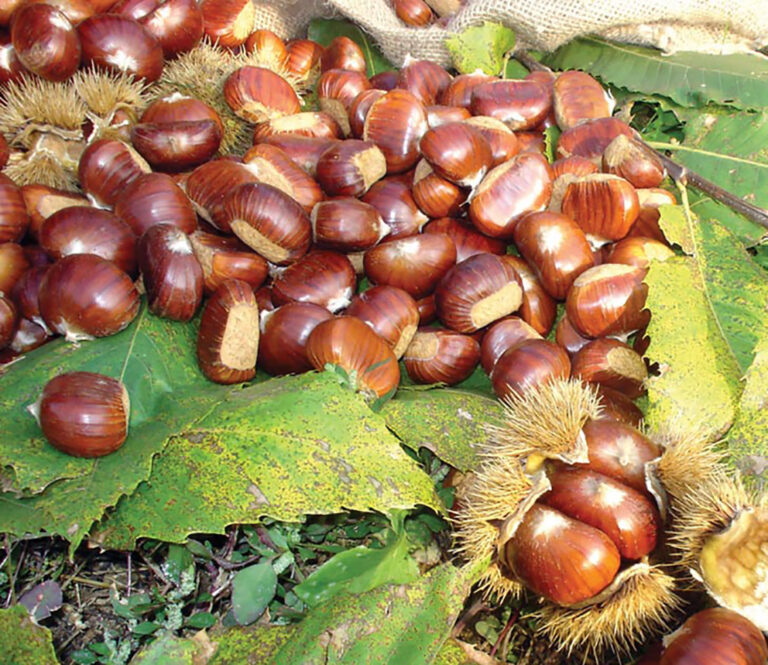
Radicio Verdòn da Cortèl
A niche product, a pretty little green rose that announces spring. The first fresh vegetables to end up on the tables as soon as winter is over. Excellent tasted with simple recipes, with hard-boiled eggs and seasoned with olive oil, or sprinkled with fried lard sauce, as they used to do in the past.
It contains more protein than beans and meat, and then potassium, calcium, and iron in high contents, more than in asparagus and spinach. Properties that make it an ideal ingredient for convalescent diets, prevention of anemia, oligo-food deficiencies and for support during pregnancy, breastfeeding and osteoporosis.
A traditional product to be re-evaluated in the tables for a complete and balanced diet.
In Roncade it has become the traditional annual protagonist of an exhibition-market in the first days of March.
Product name
Radicio verdòn from cortèl, chicory with heart, Cycorion intybus.
History
The “radicio verdòn da cortèl” belongs to the large group of chicory or radicchio, the Composite family – especially Cichorium intybus, whose consumption dates back to ancient times and the cultivation methods have been handed down through the generations in the production area. Written evidence on the food use of this vegetable is very limited. We should mention the news of a rural manual of about 1600, which recalls a “scoltellato radicchio” as a poor food of poor people.
Product description
The “radicio verdòn da cortèl” is a rustic plant, with a rosette shape, of an intense green color and a green-yellow heart. The leaves are clear, almost white, when inserted with the taproot and form an open heart. The total diameter is 7-8 cm, the head is 6-7 cm long, the root has a diameter of 1.5-2 cm which, when harvested, after grooming, is reduced to 1-1.5 cm, with a length maximum of 1.5-2 cm. The consistency of the leaves is on average crunchy, more pronounced than the similar white heart but thinner than the other green heart chicory. The taste is fresh, pleasantly herbaceous, slightly bitter.
Production process
The “radicio verdòn da cortèl” is suitable for soils of various kinds, from loose to medium-textured and up to clayey. It is sown between late August and early September, in rows or traditionally broadcast. From September to October, if necessary as a result of consistent vegetative development, due to favorable weather conditions, a cut of the foliar apparatus is possibly carried out. As the winter season progresses, bud shoots form under the protection of the external leaves collapsed by the cold. This vegetable tolerates the cold well, down to -4, -5 ° C; at lower temperatures a cover may be necessary. Fertilization is exclusively organic, from manure. Harvesting begins at the end of February and continues until mid-April at the latest. Harvesting is done exclusively by hand, using a short-blade knife, hence the name “da cortèl”. After grooming and thorough washing, it is placed in crates and sent to the market.
Uses
The “radicio verdòn da cortèl” is traditionally eaten exclusively raw, in salads, alone, accompanied by hard-boiled egg or cheeses, polenta is very suitable, tender or toasted. A typical way of serving it of the Treviso countryside is to accompany it with a sizzling lard and vinegar dressing, another traditional combination is that with cold boiled beans.
Availability
The product is available at fruit and vegetable retailers in the Marca Trevigiana from February to April.
Territory interested in production
Municipalities of Treviso, Quinto di Treviso, Zero Branco, Casale sul Sile, Preganziol, Casier, Ponzano Veneto, Roncade, San Biagio di Callalta, Monastier, Paese and Istrana, all in the province of Treviso. The production area also extends into a part of the Pedemontana and a part of the province of Venice.




